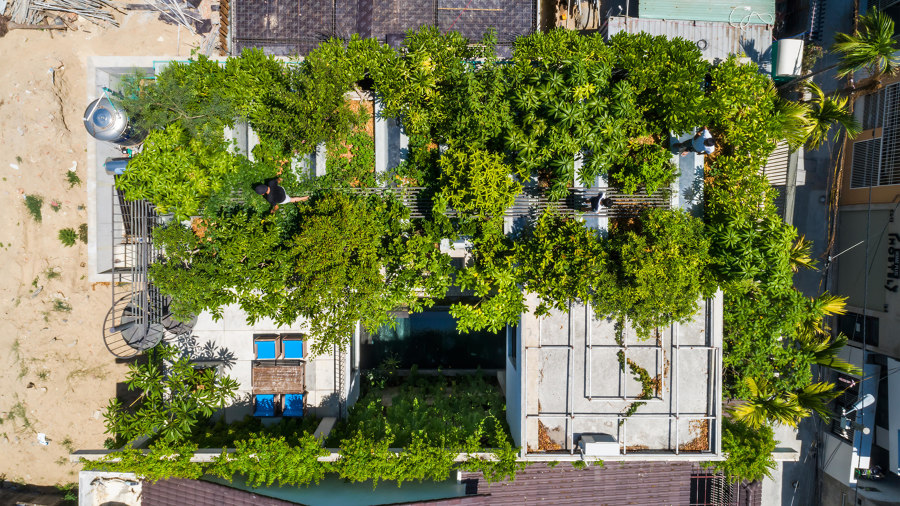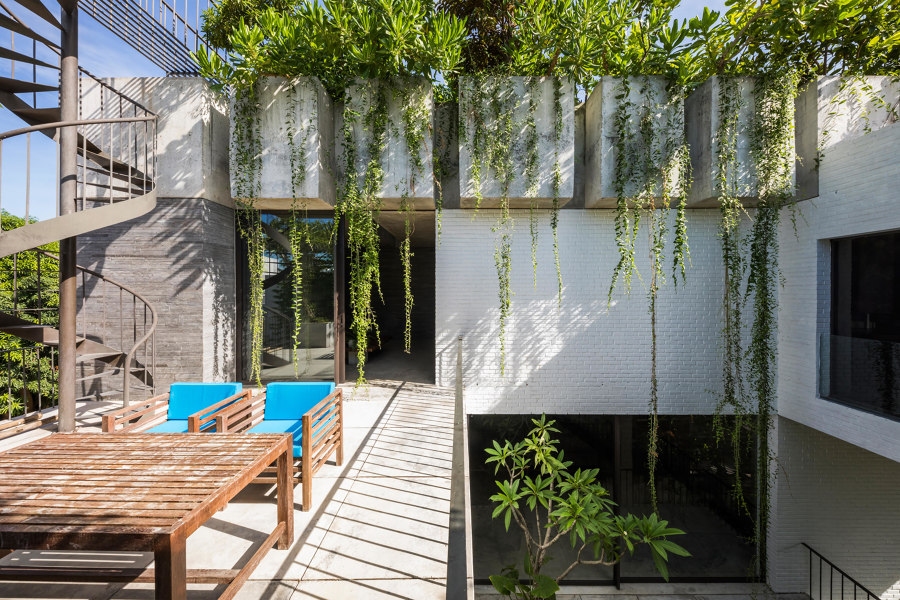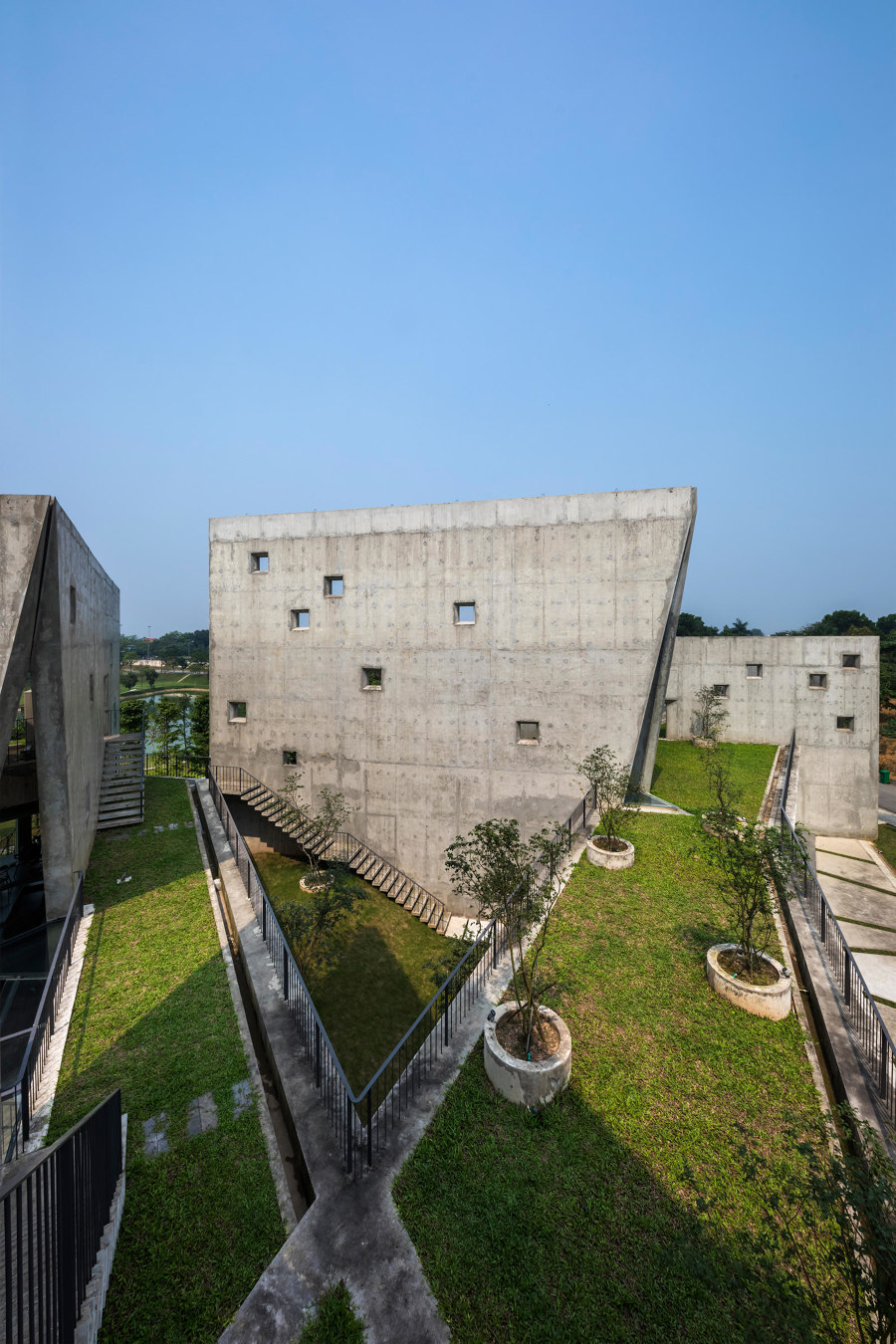Things are looking up: roof gardens
Texte par Peter Smisek
01.04.20
In an increasingly urbanised world, the issue of how to create green spaces in any meaningful way is a pressing one for planners and architects. The renaissance of the roof garden might be one answer.
The stepped roof garden of CHANG Architects’ Cornwall Garden project in Singapore serves as a natural filter for the rainwater that collects in the centrally located outdoor pool. Photo: Albert Lim K.S.

The stepped roof garden of CHANG Architects’ Cornwall Garden project in Singapore serves as a natural filter for the rainwater that collects in the centrally located outdoor pool. Photo: Albert Lim K.S.
×Architects sometimes call the roof the building's fifth facade – a place that deserves as much attention as the elevation. 20th-century modernist Le Corbusier proposed that all roofs should be flat to replace the green space lost to the building's footprint. Flat roofs may have fallen out of fashion in some quarters, but roof gardens are making a comeback, particularly in the tropical climates of south-east Asia, where lush vegetation thrives and helps to shade and keep cool the spaces below.
The roof garden of the Red Roof House allows the couple to pursue a traditional rural lifestyle in the confines of a city. Photos: TAA Design

The roof garden of the Red Roof House allows the couple to pursue a traditional rural lifestyle in the confines of a city. Photos: TAA Design
×On the outskirts of Quang Ngai, Vietnam, TAA Design has created The Red Roof, a compact house for a middle-aged couple. While the husband runs a bicycle repair shop downstairs, his wife tends to the stepped roof garden above, which allows the couple to grow their own vegetables. In addition, the house contains a number of small courtyards that channel light deep into the space, while allowing much needed natural ventilation in the tropical climate.
Cornwall Gardens house, designed by CHANG Architects, shows how roof gardens provide inhabitants with environmental benefits as well as playful social spaces. Photos: Albert Lim K.S.

Cornwall Gardens house, designed by CHANG Architects, shows how roof gardens provide inhabitants with environmental benefits as well as playful social spaces. Photos: Albert Lim K.S.
×A slightly different approach was taken by CHANG Architects in Singapore. Here, the dramatic stepped roof garden of Cornwall Garden courtyard house serves as a natural filter for the rainwater that collects in the centrally located outdoor pool. Planted with indigenous species, the rooftop garden also provides the inhabitants and their extended family and friends with an informal area for play and relaxation.
In an urban setting, increasing the number of extensive roof gardens, such as those of the Thang House by Vo Trong Nghia, can help improve air quality for all the inhabitants. Photos: Hiroyuki Oki

In an urban setting, increasing the number of extensive roof gardens, such as those of the Thang House by Vo Trong Nghia, can help improve air quality for all the inhabitants. Photos: Hiroyuki Oki
×Another urban residence with an extensive series of roof gardens and terraces is the Thang House in Da Nang City in Vietnam. Designed by rising stars Vo Trong Nghia, the building contains a large roof garden, which doubles as an outdoor communal area for the residents, while the trees act to filter out the pollutants from the air, and further planters filter water into the pool on the ground floor. The lush planting makes this small house feel like a private oasis.
The dramatic concrete walls of Vo Trong Nghia's Viettel Offsite Studio roof gardens block out the bright sunlight, while their window-like perforations let in a gentle breeze. Photos: Hiroyuki Oki

The dramatic concrete walls of Vo Trong Nghia's Viettel Offsite Studio roof gardens block out the bright sunlight, while their window-like perforations let in a gentle breeze. Photos: Hiroyuki Oki
×But roof gardens are not just limited to private houses. Another project by Vo Trong Nghia, the Viettel Offsite Studio in Hanoi, is part of a larger corporate campus for the telecom company Viettel. Designed to provide indoor and outdoor space for engineers visiting from other cities, the building comprises six triangular wedge-like pavilions rising from a one storey podium, the building features dramatic concrete fins that create a series of shaded roof gardens with strongly focused views.
© Architonic




















